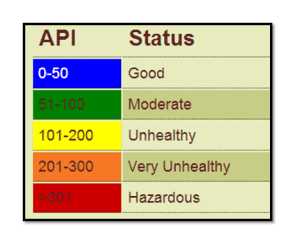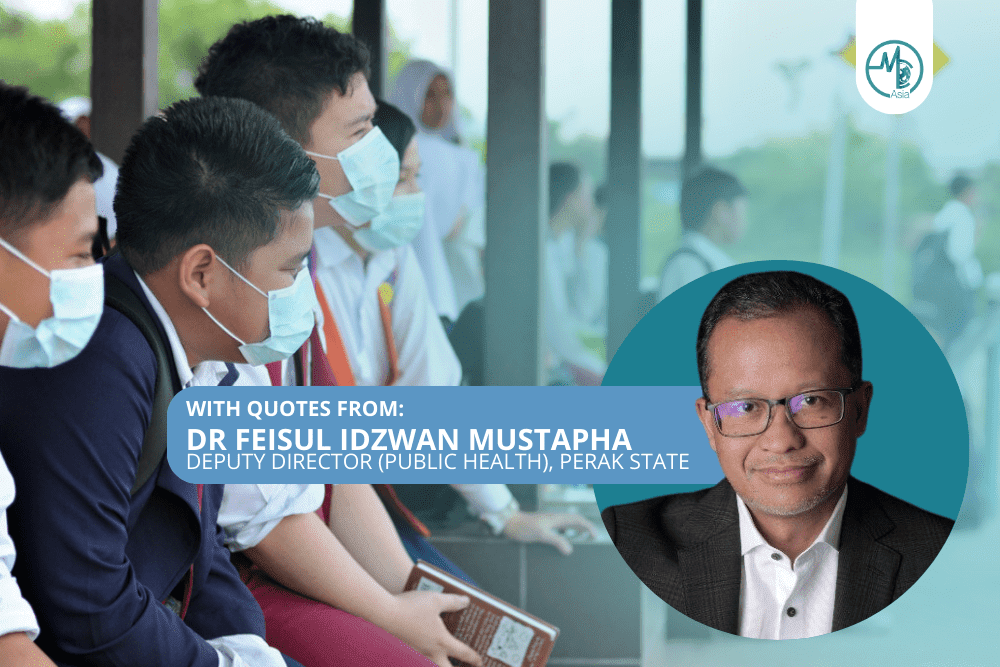Health experts urge Malaysians to adopt safety measures as the Air Pollution Index (API) readings reach unhealthy levels in multiple locations over the past few days.
Malaysia has been hit by the haze once again. API readings seem to be fluctuating between 100 to 200, which is cause for concern. The haze is believed to be due to open biomass burning in parts of Indonesia which led to
transboundary smoke haze. Indonesia has denied responsibility as the haze worsens in Malaysia and neighbouring countries.
How does Haze come about?
Haze can be simply described as tiny, smog-like, suspended particles (solid or liquid) in the air. It can occur due to various natural phenomena and human activities such as:
- Dust storms
- Volcanic eruptions
- Wildfires
- Industrial pollution
- Byproducts of combustion from vehicle exhausts
- Burning of fossil fuel
- Open burning
The haze in Malaysia, however, has been attributed to forest and peat fires in Indonesia. The open burning of large amounts of biomass has released concentrated, suspended particulate matter (PM) into our atmosphere.
The World Health Organisation (WHO) estimates approximately 7 millions deaths linked to air pollution annually worldwide.
Significance of API readings
API readings are used to measure the severity of the haze. They are calculated based on the average concentration of air pollutants, ranging from good to hazardous. Malaysia’s Department of Environment (DOE) categorises API readings as shown in the table below.

Since the API readings have fluctuated between moderate and unhealthy for the past few days, it would be advisable for the general public to start taking precautions. Children, pregnant women and the elderly with chronic conditions are more vulnerable to the effects of the haze.
A local study conducted in 2014 by University Kebangsaan Malaysia (UKM) indicated that the haze is linked to an increase in inpatient cases by 2.4 per 10,000 people each year. Estimates place the average annual economic loss due to this at MYR273,000.
How the Haze Negatively Impacts on Our Health
According to Dr Feisul Idzwan Mustapha, deputy director of Perak State’s Health Department (Public Health), haze contains minute particles wit
h toxic substances that can find their way into our bloodstream via the lung. He shared, “Hazy conditions can increase the risk of respiratory infections, coughing, shortness of breath, asthma attacks and reduce lung function.
He also stressed that individuals with pre-existing lung issues are at higher risk of being affected by the haze.
Dr. Nurul Rahman Mohamad Zahari, an occupational health doctor in Hospital Pantai Ampang voiced similar concerns. He said, ‘’Haze can exacerbate or trigger respiratory issues such as asthma, bronchitis and pneumonia. It can negatively impact the cardiovascular system as well, especially among individuals with pre-existing heart issues.’’
Children are more susceptible to the negative effects of the haze due to their developing respiratory system. Since children have narrower airways and faster breathing rates, they end up breathing in relatively more haze particles for their size compared to adults. The elderly on the other hand, are less capable of clearing the pollutants they inhale from their system.
Call for Action
Dr. Feisul, who is also a consultant public health physician, urged Malaysians to be aware of changes in air quality in their respective areas. His recommendations include:
- Staying indoors as much as possible
- If there is need to go outside, make it quick and wear a facemask (preferably N95 respirators)
- Keep the doors and windows closed
- Improve indoor ventilation (air-conditioning or high quality air purifiers)
- Wear protective eye-wear to avoid eye irritation due to airborne particles
- Stay hydrated throughout the day
Healthcare providers advise individuals with pre-existing respiratory conditions to follow prescribed guidelines and treatment regimes. They also advise the general public not to self-medicate, especially using inhalers. Patients with symptoms are to seek proper medical advice and treatment to prevent unwanted consequences.
Conclusion
It is vital for us to be aware of the dangers that come with the haze. We should also be vigilant and safeguard members of our community especially those who are more susceptible to the effects of the haze. While we might not be able to neutralise the factors causing the haze, we can certainly do our part to reduce its effects and keep each other safe.

